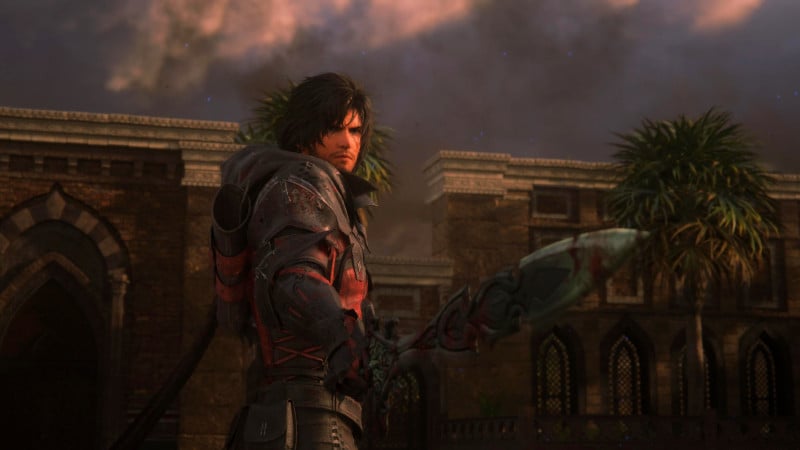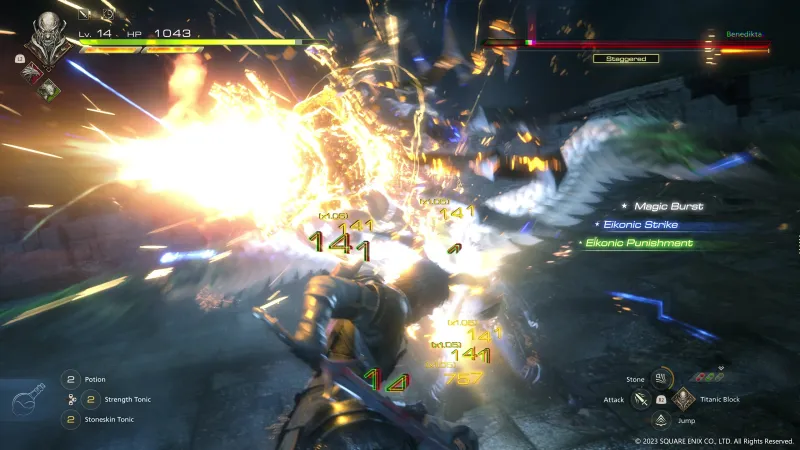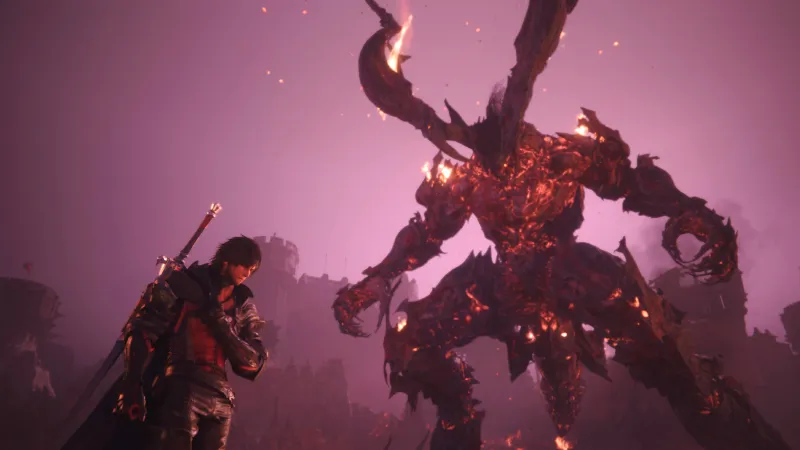Final Fantasy XVI Review – Victory In The Land Of Gods And Monsters

Final Fantasy XVI is extravagant, bombastic and extreme. This game goes beyond what I expected from an action-oriented Final Fantasy. This is a significant shift in the history of Final Fantasy, as it ditches any turn-based selection of moves or active-time combat in favor of an extravagant and fast-paced combo-heavy system.
There’s a linear action game in FFXVI, and it’s the highlight of the experience. The game’s openness and standard RPG mechanics outside the story-based quests and tropes can slow down an otherwise exciting story. Still, Final Fantasy XVI’s highs are easily some of the highest in the series and even action games.

“The legacy of the crystals has shaped our history for long enough,” reads the tagline of FFXVI. It’s a theme you’ll see talked about and around throughout the game. Clive Rosfield, his outlaw gang, including Cid, Jill and the rest of this excellent cast are all revolutionaries. They set out in more than one way to overthrow pillars that had only grown stronger throughout history.
The story begins as a revenge tale against the backdrop of slavery; in Valisthea, Bearers, or people that can use magic, are enslaved, traded, and sold to whomever and wherever they’re needed. FFXVI does not say anything unique or noteworthy on this topic; a failure made even more glaring by the lack of people of color in the main cast. The biggest miss in FFXVI is a cast that’s overwhelmingly white, commenting and fighting slavery and systems which support it. This lack of representation of people who are often affected by slave trade and slavery comes from medieval Europe.
The plot eventually abandons this discussion and focuses on the other, general pillars that are a part of Valisthean culture that need to be thrown down. And it’s here that the story shines. Although sometimes too close. Game of ThronesThe voice actors behind the characters are committed to each beat, which works. Final Fantasy and Kingdom Hearts fans who enjoy cheesy romance in stories, both romantic and platonic will love how FFXVI is played out.
FFXVI’s story is strengthened by a visual style that, at times, is gorgeous, although there are areas where I am less than impressed, even disappointed. Plastic NPC models are common, and especially for non-main character characters. They contrast starkly with those in the main cast. The performance mode is never able to reach 60 FPS.
FFXVI is more stylized than realistic, very much “medieval Final Fantasy.” When the visual pieces, like the UI, environments, and flashy combat effects, blend, the entire visual presentation shines. However, it’s sometimes hard to see through it all to understand what’s happening.

These areas have the lowest level of excitement. They’re large but mostly unmemorable empty spaces, save for an occasional side quest, random treasure, or horde of enemies. Their emptiness speaks to my largest issue with FFXVI – it’s an excellent action game, but the same can’t be said for it as an RPG. There are dozens of crafting materials, and I can’t tell you one because crafting is less of a system in FFXVI and more of a word. There aren’t weapons that work better with You can also find out more about this by clicking here.What type of building or The following are some examples of how to use – there’s only the strongest weapon, and it’s obvious it’s the one you should craft. And save for some endgame weapons, you’ll always have the materials needed if you complete story missions and the occasional side quest. It’s the same for gear.
It’s the Eikonic powers where FFXVI’s RPG mechanics come into play. Clive’s abilities will change as he acquires more Eikons. This allows you to modify your character. I especially fell in love with my Phoenix-Garuda-Bahamut combo. Other accessories boosted this effect, including one that lowered the cooldown of my powerful Phoenix attack. FFXVI, however linear it may be in terms of its RPG gameplay, is still disappointing for those who are not interested in these accessories and abilities. The majority of weapons, skills, and accessories will be available to players who have reached the credits. It’s how they’re mixed and matched where playstyle diversity appears.
Most side quests have some variation of fetch quests. You can talk to someone, then go there, fight some enemies and come back for the reward. And while not always the case, many of them feature a surprising amount of dialogue and detail, and it’s usually a great read. Creative Business Unit III adds a quality-of-life feature I’d like to see in every RPG – side quests with a plus sign on the marker means completing it will reward you with something beyond gil or resources. It was this marker that helped me complete sidequests, which led to me receiving increased potion stock, potency and even a Chocobo.
The side quests are interconnected and I enjoy how the stories develop. It was a particularly welcome feeling, as Clive’s narrative spans decades and he is in a war. Seeing how the world outside of Clive’s mission changes visually and narratively over time adds extra gravity to the actions I take.
However, the pace and content of these side quests, and really everything that happened outside of main story quests, simply don’t compare to what the main missions are doing, and they feel significantly slower and less exciting as a result. I enjoy collecting new songs to play in my Hideaway’s orchestration jukebox and stopping in with loresman Harpocrates to learn new things about Valisthea, but these side activities often felt more like doing my due diligence than something I actually wanted to do.
Perhaps that’s the point. Clive and the gang need downtime after what they accomplish in story missions – mind you, missions that constantly left me in awe, goosebumps covering my arms – but deserved downtime for the characters doesn’t mean it’s welcome downtime for me. It’s less that everything happening outside of the main story is rote, but rather, what Creative Business Unit III does in those story missions is so great that I constantly found myself rushing as best I could to the next one.

I’m not exaggerating when I say that there was a moment in FFXVI, a boss fight that lasted what felt like an hour, I’d call my favorite moment in Final Fantasy, and even more than that, all of gaming. It’s unforgettable and demonstrates Creative Business Unit III’s confidence and command over the brand. This moment, almost topped later on in the game by another speaks of the highs and lows that FFXVI has to offer.
The peaks are so tall for two reasons. Creative Business Unit III created the best action combat system I’ve seen to date. It’s fast and easy to understand on its surface. It has depth and the extent to which you can take it depends on your willingness to learn its systems. The addition of Eikonic powers only intensifies the game, and there are certain combos that I use to defeat and stagger even the most difficult enemies. Controlling the Ifrit Eikon during setpiece moments wasn’t as varied as I would have liked from a gameplay perspective, but the spectacle surrounding these moments makes up for it and then some.
Those familiar with FFXIV will find this unsurprising, but composer Masayoshi Soken’s FFXVI score nearly outshines every element of the game. And I don’t say that to dampen expectations about playing the game and what’s in store; I say that to raise your expectations of Soken’s score, which features new personal favorites in the expansive Final Fantasy catalog. Wavering between soft piano keys and robust chorus-backed epics that envelop entire scenes, Soken masterfully demonstrates why he’s a fan-favorite Final Fantasy composer multiple times throughout FFXVI’s runtime.
With more than 65 hours of FFXVI behind me, I still have a lot to do beyond the story, and I’m glad my time with Creative Business Unit III’s latest isn’t at its end yet. FFXVI contains some of the best moments I’ve experienced in a modern Final Fantasy game, but it also has its share of low points that threaten to slow down their pace. I wish FFXVI’s various elements were intertwined more seamlessly. Still, when I look back at my time with Clive, his friends, his enemies, and Valisthea, it’s those highs that I vividly remember. FFXVI is very different from its predecessors, but in many ways, very familiar; And it’s still a Final Fantasy, through and through, reminding me why I love this series so much.
#Final #Fantasy #XVI #Review #Victory #Land #Gods #Monsters








